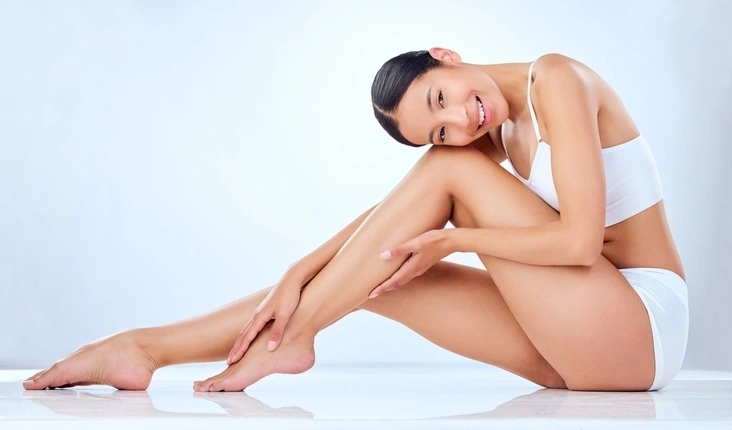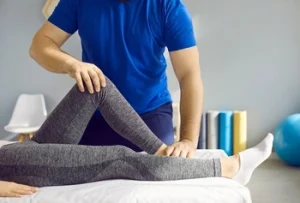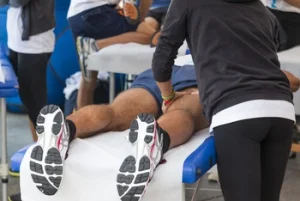Foot massage techniques form a fundamental part of traditional and modern wellness practices. Whether applied by a professional massage therapist or at home, these techniques address tension, stiffness, and discomfort in the feet through gentle, moderate pressure and structured movements.
This guide explores the principles behind foot massage, various approaches, reflexology principles, and essential methods to support overall comfort and mobility.
Understanding the Purpose of Foot Massage
Foot massage is a manual therapy focusing on the feet, ankles, and lower legs. It involves using fingers, thumbs, and palms to apply pressure and movement to specific foot areas. The purpose is to promote circulation, relieve muscle and tendon tension, and provide a sense of relaxation.
This type of treatment is used as part of a broader wellness routine or to support recovery after a long day of standing, walking, or athletic activity.
 The Connection Between Reflexology and Foot Massage
The Connection Between Reflexology and Foot Massage
Reflexology is a structured practice based on the concept that specific areas on the feet correspond to different body parts. A reflexology foot massage uses targeted pressure to stimulate these points, supporting relaxation and balance throughout the body.
Reflexology techniques differ from general massage methods because they focus not only on the muscles and tendons but also on nerve pathways that may influence other organs and systems.
Preparing for a Foot Massage
Before beginning, it’s essential to create a comfortable and clean environment. You may sit on a couch, chair, or bed with a towel underneath your feet. Soaking your feet in warm water for several minutes helps loosen tight skin and muscles while promoting blood flow.
Ensure both feet are dried thoroughly before starting to prevent friction and irritation.
Essential Tools and Considerations
A good foot massage doesn’t always require equipment. However, having the following items can make the process comfortable:
- A small amount of massage oil or lotion to reduce friction on the skin
- A clean towel for drying and wiping excess oil
- A comfortable chair or couch to sit on
- A supportive pillow or rolled towel to rest one foot while working on the other
Step-by-Step Foot Massage Techniques
The following structured approach outlines foot massage techniques designed to promote comfort, flexibility, and overall relaxation.
Each step targets a different area of the foot, allowing for a balanced and comprehensive session.
1. Starting with Relaxation Strokes
A massage therapist may begin by holding one foot with both hands and using the thumbs to apply smooth, forward strokes from the toes towards the ankle. This initial motion helps warm the skin and underlying tissues, preparing the muscles for deeper techniques.
The left and right sides of the foot are typically addressed to maintain even coverage and support an overall sense of relaxation.
2. Focusing on the Arch and Heel
The therapist may use moderate pressure with both thumbs, moving in small, circular motions to address the arch. This region may carry tightness, particularly in athletes or individuals who stand for extended periods.
Gradually moving towards the heel, the therapist may press and release slowly to help relieve tension in the muscles connected to the Achilles tendon, contributing to comfort and potentially improved mobility.
3. Working on the Toes
Each toe may be held individually and lightly pulled, twisted, or stretched. Beginning with the big toe and continuing across all the toes allows the therapist to maintain balance and even attention.
Light pressure between the toes using the fingers may sometimes be associated with stimulating local circulation and supporting healthy skin.
4. Addressing the Ball of the Foot
When working on the ball of the foot, a massage therapist may use the thumbs or knuckles to make small, circular movements with steady, moderate pressure. As this area can be sensitive, maintaining comfort is a priority.
This technique can assist in easing local tightness and supporting flexibility within the muscles and tendons beneath the surface.
5. Stimulating the Heel and Achilles Tendon
To address the heel and Achilles tendon, the therapist may cup the heel in one hand and use the thumb of the other hand to glide upwards towards the ankle. These smooth, continuous strokes may help stimulate circulation and loosen the connective tissue.
Alternating between rubbing, gentle squeezing, and stretching may support flexibility and function in this area.
6. Focusing on Trigger Points and Sore Areas
Massage therapists often identify and address trigger points: small areas of muscle tightness that may feel firm or tender to the touch. Using a thumb or knuckle, they may apply firm but moderate circular pressure for several seconds before gradually releasing.
Communication regarding pressure and comfort is important throughout the process.
Applying Reflexology Techniques
A reflexology foot massage targets pressure points corresponding to specific body parts. For instance, the tips of the toes are often linked to the head, while the middle arch area relates to digestive organs.
Applying focused thumb pressure to these zones can help stimulate natural balance and relaxation. Reflexology techniques should be performed using consistent, controlled pressure.
Light pressure can help soothe surface muscles and skin, while deeper pressure targets the underlying tendons and joints.
Movements should always be slow, steady, and purposeful, moving in a forward direction to follow the natural flow of circulation.
Common Conditions Addressed
Foot massage techniques may support people experiencing tightness, stiffness, or general discomfort caused by everyday activity or certain conditions. Some common examples include:
- Fatigue after a long day of standing
- Tight calves or Achilles tendon tension
- General stiffness in the ankle joints
Massage is not a medical treatment, but may complement professional care when used responsibly.
 When to Seek Professional Guidance
When to Seek Professional Guidance
A trained massage therapist can assess your feet and apply techniques across a full range of movements. They may also identify tight areas or potential imbalances that could be addressed through targeted care.
If you experience persistent or painful symptoms, it’s recommended to consult a qualified health professional before beginning any massage program.
Hygiene and Aftercare
After completing the massage, the massage therapist will wipe away any excess oil or lotion with a towel. They will then wash your feet with warm water and dry them thoroughly, especially between the toes.
Resting for several minutes is recommended to allow circulation to stabilise before walking or returning to other activities.
Some therapists may recommend wearing clean socks or comfortable footwear after the session to help retain warmth and support post-treatment comfort. For those who experience ongoing tension or stiffness, gentle at-home care, such as soaking the feet in warm water or performing light stretching, can complement the massage.
Regular hygiene and mindful aftercare contribute to maintaining the health of the skin, muscles, and joints in the feet over time.
Frequently Asked Questions
How long should a typical foot massage last?
The duration of a foot massage depends on the person’s comfort and focus areas. Your massage therapist can tell you the exact duration.
Can a foot massage help plantar fasciitis?
Foot massage may help relieve tension in the arch and heel, which are often affected by plantar fasciitis. However, it should not replace professional medical advice.
Is it normal to feel soreness after a massage?
Mild soreness can occur as muscles and tendons adjust to increased blood flow and movement. It usually subsides within a day.
Conclusion
Foot massage techniques combine practical skills with understanding anatomy, reflexology, and mindful touch. Whether performed by a massage therapist or practised at home, these techniques can help loosen tight muscles, relieve mild tension, and promote a sense of relaxation.
Applying moderate pressure, focusing on one foot at a time, and maintaining consistent movement may support your feet’s health, comfort, and overall function.
Over time, these structured practices may help maintain flexibility and stimulate circulation.
For more information about foot massage techniques or to discuss whether this type of treatment may be recommended for you, contact Wayne Massage at:
- Hunter Shop: (02) 8073 9376
- Townhall Shop: (02) 8073 9382
- Haymarket Shop: (02) 8073 8390
- Mobile: (04) 1087 8827
References
Bottaro, A. (2024, August 4). Foot Reflexology Explained: Benefits and Practice. Verywell Health. Retrieved October 15, 2025, from https://www.verywellhealth.com/foot-reflexology-7111712
How to Give A Foot Massage. (2025, October 5). Drugs.com. Retrieved October 15, 2025, from https://www.drugs.com/cg/how-to-give-a-foot-massage.html
Welch, A. (2023, September 14). What Is Reflexology? A Detailed Scientific Guide to This Type of Massage Therapy. EverydayHealth. Retrieved October 15, 2025, from https://www.everydayhealth.com/integrative-health/reflexology/guide/


 The Connection Between Reflexology and Foot Massage
The Connection Between Reflexology and Foot Massage When to Seek Professional Guidance
When to Seek Professional Guidance



